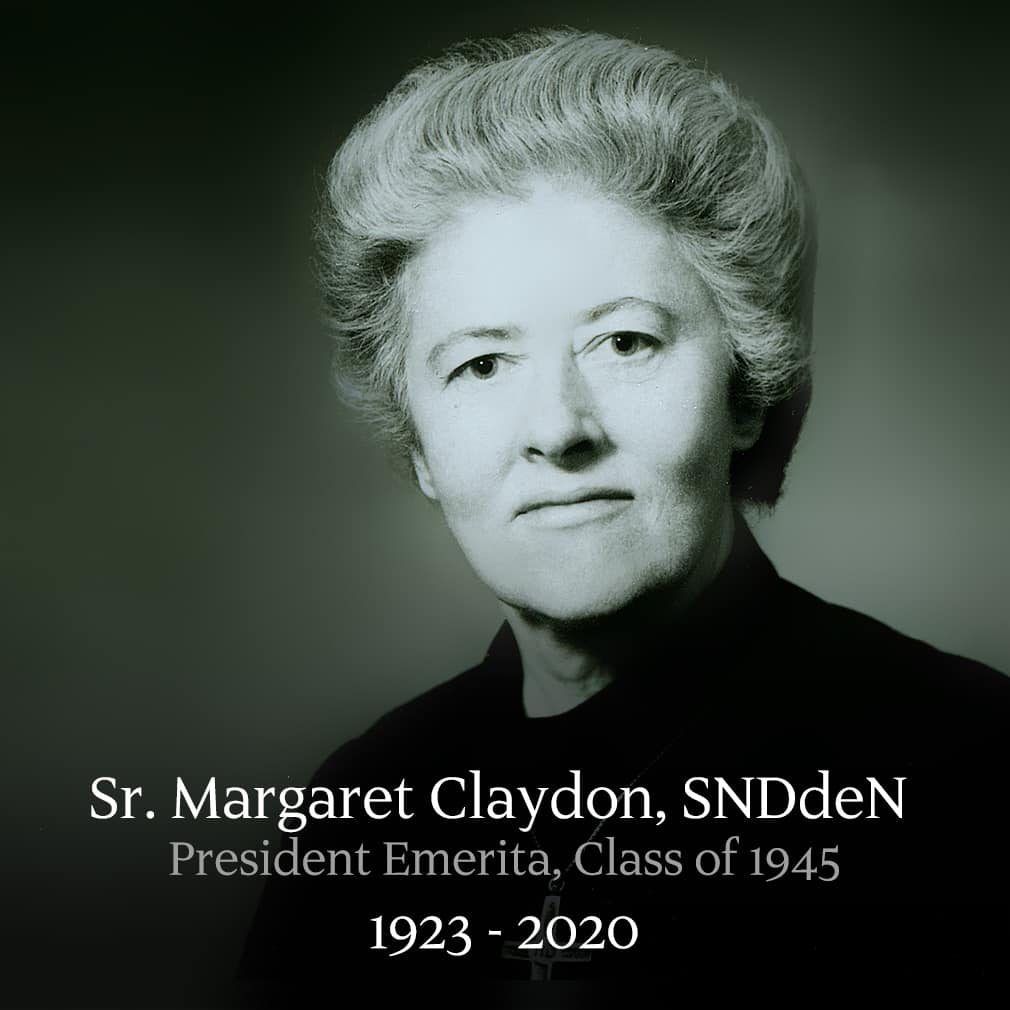
Sr. Margaret Claydon, SNDdeN, ’45
With heavy hearts Trinity shares the sad news that President Emerita Sr. Margaret Claydon, SNDdeN, Class of 1945, passed away on February 1, 2020, at Mount Notre Dame in Cincinnati. She was peaceful in her final days and surrounded by the love and care of the Sisters of Notre Dame de Namur, her family and devoted Trinity alumnae in Cincinnati. The arrangements for a celebration of Sr. Margaret’s life and legacy will be announced soon.
Sr. Margaret Claydon was one of the greatest exemplars of Trinity’s ideals and a role model beyond compare. Read about Sr. Margaret’s life and legacy and share your memories.
